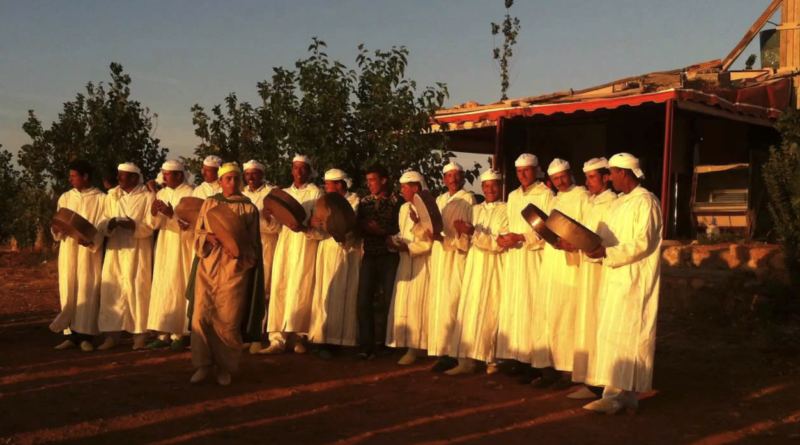Ahidous dance and Music
Ahidous is a cultural tradition of collective Amazigh dancing and singing that has been practiced for generations by people residing in the Middle and High Atlas Mountains of Morocco, particularly in Imilchil and Midelt. The dancing involves supple and undulating rounds, and both men and women participate while accompanied by Amazigh songs.
The Ahidous consists of three primary elements: the Izlan song, which can be related to local poetry or an improvisation that covers a range of topics from love to politics; the musical rhythm produced by tambourines and hand clapping; and the mixed dance. There are two types of Ahidous, including the Ahidous Askwat, which is performed during tribal special occasions, and the Ahidous Amezian, which is performed during family celebrations. Every year, the Bou Azmou festival of the music of the summits in Imilchil celebrates the Ahidous, the dance, and the song of the Amazighs of Imilchil.
During an Ahidus performance, a group of performers, including men and women, stands shoulder to shoulder, forming either a large circle or two facing lines. The leader of the dance, known as the Ammehreb in Tamazight, stands in the center and adjusts the rhythm as they accompany and direct the dancers.
The origins of Ahidus are not well-known due to the lack of extensive research, but it is believed to have originated from the Amazigh tribe of Zenata. The initial formation of the dance was a closed circle, symbolizing the unity among the performers and the tribe’s inhabitants. The leader of the dance would stand in the middle and lead the group.
The traditional uniform for men during Ahidus performances is a white djellaba and a turban, symbolizing peace, while women have the freedom to wear white or colorful kaftans with silver jewelry. Ahidous dances are considered an expression of victory after a conflict or war, and this aspect has remained unchanged over the years.
What makes Ahidous music so special is its ability to bring people together and create a sense of community. The music is typically performed at social events, such as weddings and festivals, and it is a way for people to celebrate their culture and traditions.
The music itself is characterized by a combination of percussion instruments, including drums, tambourines, and castanets, as well as a variety of stringed instruments, such as the guembri, a three-stringed bass instrument, and the banjo-like oud. The music is often accompanied by call-and-response vocals, which create a lively and engaging atmosphere.
One of the most impressive aspects of Ahidous music is its ability to adapt to modern times while still maintaining its traditional roots. Today, many musicians are incorporating modern instruments, such as the electric guitar and synthesizer, into their performances, while still preserving the unique sound and spirit of Ahidous music. Recently, the rock band Meteor Airlines released a single inspired by Ahidous music.
One of the most iconic people of the Ahidous music is Mouha Oulhoussein Achiban. Also known as Oulhoucine or Oulhouceine, was a renowned Moroccan Amazigh singer and dancer born in El Kbab in 1916. Achiban began his career in the early 1950s and gained years of experience, eventually becoming one of the most famous figures in Morocco and internationally. He participated in various festivals across Africa, Europe, and the United States, where he helped promote the Berber musical art of Ahidous. Achiban’s talent and contributions were recognized by U.S. President Reagan, who gave him the title of “the maestro,” a title that he carried until his death in 2016 at his birthplace of El Kbab.
Despite its growing popularity, Ahidous music remains deeply rooted in tradition and culture. It is a way for the people to celebrate their history, language, and identity, and it serves as a reminder of the importance of preserving cultural traditions in a rapidly changing world. Whether performed in its traditional form or adapted to modern times, Ahidous continues to be a vibrant and meaningful expression of Amazigh culture.
